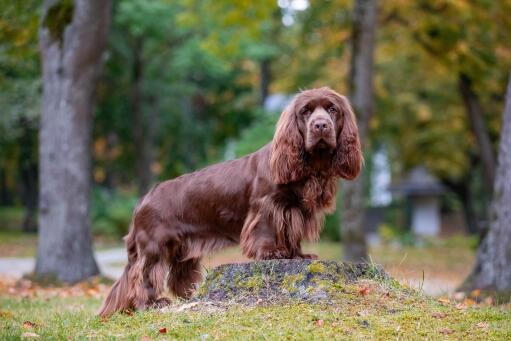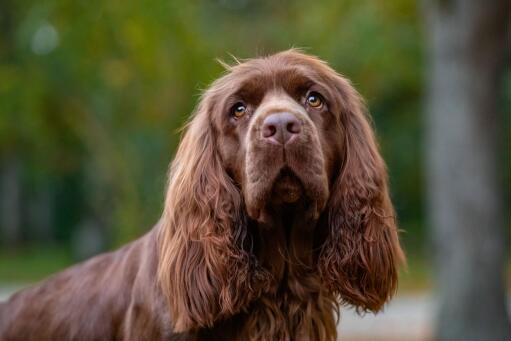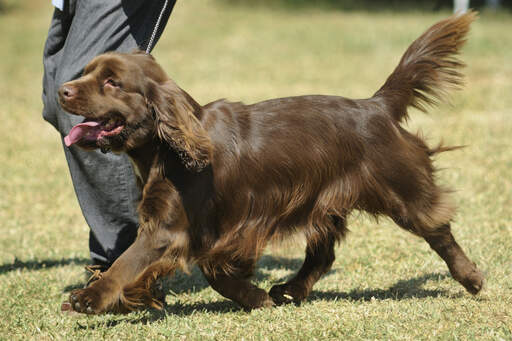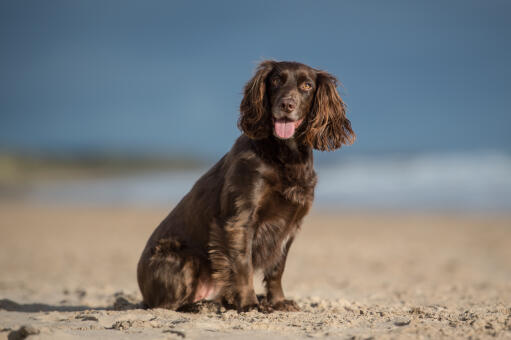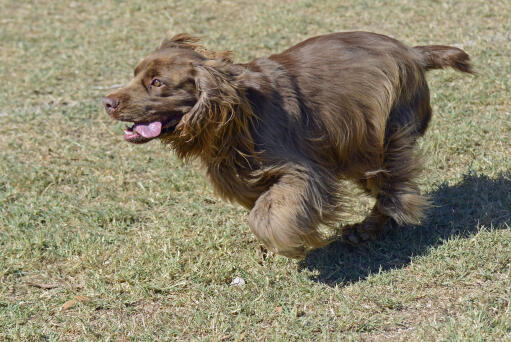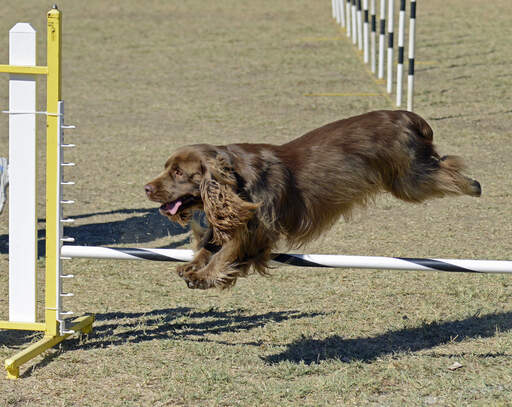Sussex Spaniel hund








History
The first Sussex Spaniels were bred in the 19th century in Sussex, England and soon became popular additions to large estates on the hunt. They were slow, dedicated and deliberate when out hunting, flushing birds towards the hunters. They are vocal when hunting and have an excellent nose for scenting. The bred declined after the Second World War, but numbers began to rise in America in the mid 20th century. It is still classed as quite rare with a limited gene pool.
Behaviour
The Sussex Spaniel loves to be outside working the field. It is a cheerful dog that enjoys being around people and gets on well with families and children. They are calm and placid when at home and usually get on well with other dogs and cats if properly socialised from a young age. Sussex Spaniels like to be with you all the time and do best if some one is at home for most of the day. They can suffer separation anxiety and will bark, howl and can be destructive if left alone for too long. They will bark/howl a lot, especially when someone comes to the door, but are welcoming with strangers as they might get a tummy rub or treat from them. Sussex Spaniels learn more slowly than other Spaniels, they simply like to plod along. They are quite clever but can't really be bothered with most of it. Time, patience and lots of praise and food treats are needed, along with a sense of humour to get this breed to do wheat you want. You will get there eventually. For a medium sized dog, they are quite strong, so it is important to teach them lead work early on. They react badly to harsh words and just want a cuddle and praise. They bond closely to their family, so plenty of visitors early on will prevent possessiveness and possible aggression. Sussex do well in field tracking, retrieval, and scent work if trained and like to be around their owners when out and about in the field. They are even tempered and happy when working, praise is all they need. Recall is usually good and they can plod around on long walks for hours without tiring. A long daily walk is enough to keep them happy, but more if you can. If properly socialised, they love the company of other dogs and will gladly play with them in the park.
Their coat needs brushing a couple of times a week and ears might need trimming to stop them becoming too matted. They can suffer from Canine Hip Dysplasia and Intervertebral Disk disease. Like many Spaniels, Sussex are greedy and will gain weight quickly. Food intake should be closely monitored to prevent obesity which can lead to other health issues.
Temperament
Sussex Spaniels have a gentle and affectionate temperament. They are clever dogs who sometimes think they know best so consistent and early training really is key. Happy to meet strange dogs and people which you should encourage from as early as possible to help get a well rounded temperament. Sussex Spaniels enjoy being outside and having an explore so try to provide at least a good daily walk.
Health Problems
Health problems that may affect Sussex Spaniels include canine hip dysplasia (CHD), heart disease and intervertebral disc disease (pressure on spinal cord which can cause paralysis).
Breed Details
- Status: Rare
- Life Expectancy: 11 - 12 years
- Weight: 16 - 20 kg
- Højde: 13 - 15"
- Rare: Ja
- Coat: Medium
- Grooming Requirements: More than once per week
- Town or Country: Land
- Minimum Home Size: Small House
- Minimum Garden Size: Large Garden
- Breed Type: Gun Dog
- Størrelse: Medium
- Energy Level: Medium
- Exercise Required: Over 2 hours

